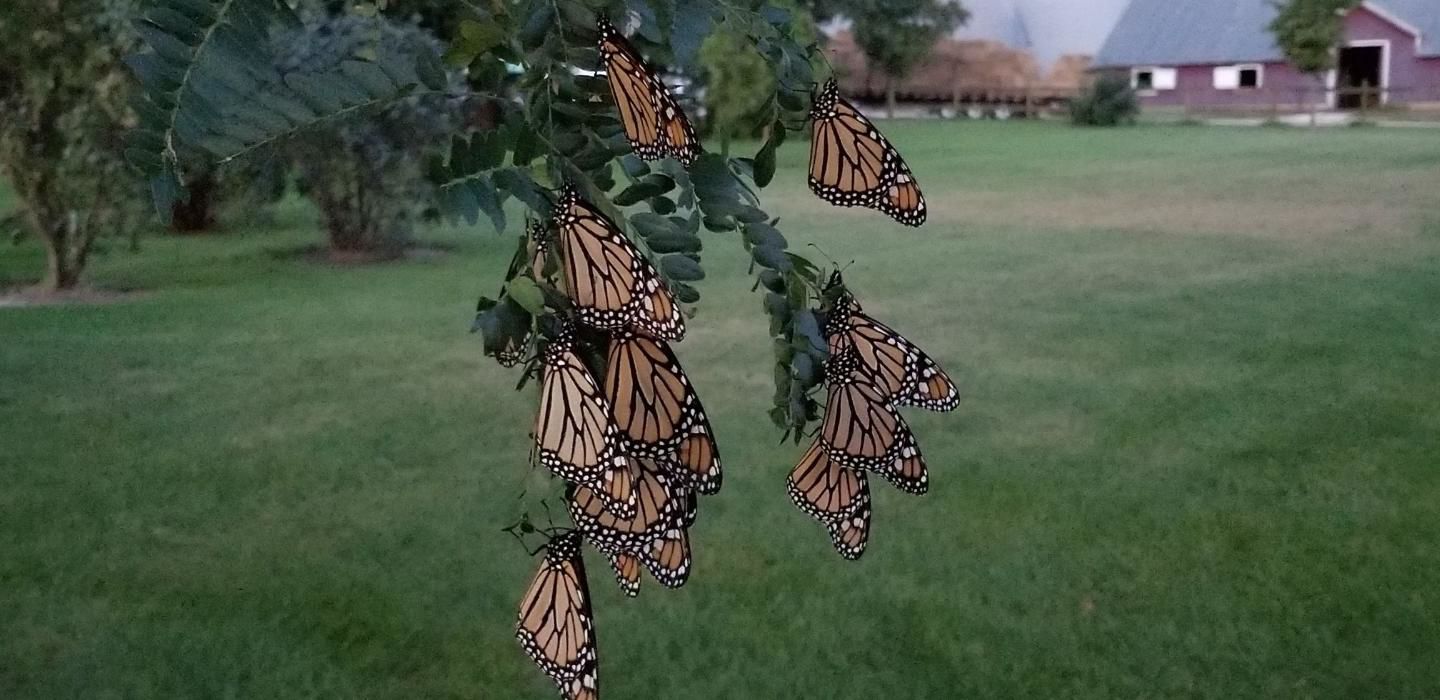To me, the first sign of fall isn’t the shorter days or the changing leaves. It’s the monarchs.
The iconic black-and-orange monarch butterfly is known for their annual journey to Mexico, where they spend winter.
You know the butterflies are getting ready to hit the road when they start clustering in overnight roosts. According to Journey North, overnight roosts have already been spotted in more than a dozen states, including Mitch and Charli Gregory’s farm in central Illinois.
“Right now, we have thousands on our place,” Charli says.
With the help of USDA’s Natural Resources Conservation Service and Farm Service Agency, the duo has established 33 acres of pollinator habitat on their land. At dusk, the monarchs roost in trees, and during the day, they’re gathering nectar to provide the fuel they need to make their upcoming international trip.
A unique species
“Monarchs are a truly unique species,” said Laura Jackson, a forest landowner in Bedford County, Pennsylvania. “While some other butterflies do migrate, none of them accomplish the astounding feat of flying thousands of miles to a wintering roost where they spend the winter with millions of their own kind. The ability of the fourth generation to fly from as far as Canada to the high mountains of Mexico and then fly north again to lay eggs in the spring is truly remarkable. Their sense of navigation is truly a phenomenal ability.”
On her land, Laura said she and her husband Mike have seen more monarchs this summer than in previous years.
“We saw the first monarch butterfly in June, and the numbers have been steadily increasing all summer,” she said. “Now that monarch migration is in full swing, we might see dozens of monarchs in one day.”
Migration and milkweed
Laura said the monarchs are especially attracted to wildflowers on their property, such as asters, milkweeds and joe-pye weed.
“Monarchs are specialists,” she said. “Their populations depend entirely on milkweeds. That is the only plant that caterpillars eat.”
Populations of the butterfly have decreased significantly over the past two decades, in part because of the decrease in native plants like milkweed—the sole source of food for monarch caterpillars.
Available USDA assistance
Like the Gregory’s and the Jackson’s, farmers, ranchers and forest landowners are voluntarily managing for monarch habitat on working lands across the country, and USDA can provide technical and financial assistance to help.
For example, the Gregory’s enrolled their property into the Conservation Reserve Program in 2015, and the Natural Resources Conservation Service helped Charli and Mitch select the best plants and develop a conservation plan for the property.
“We encourage producers to visit their local USDA service center to learn more about Farm Bill programs,” said Ray Moranz, a pollinator biologist with the Natural Resources Conservation Service who works with producers in Oklahoma, Kansas and Texas to implement butterfly-friendly practices. “We can help you find the practices that are right for your operation as well as the best plants.”

